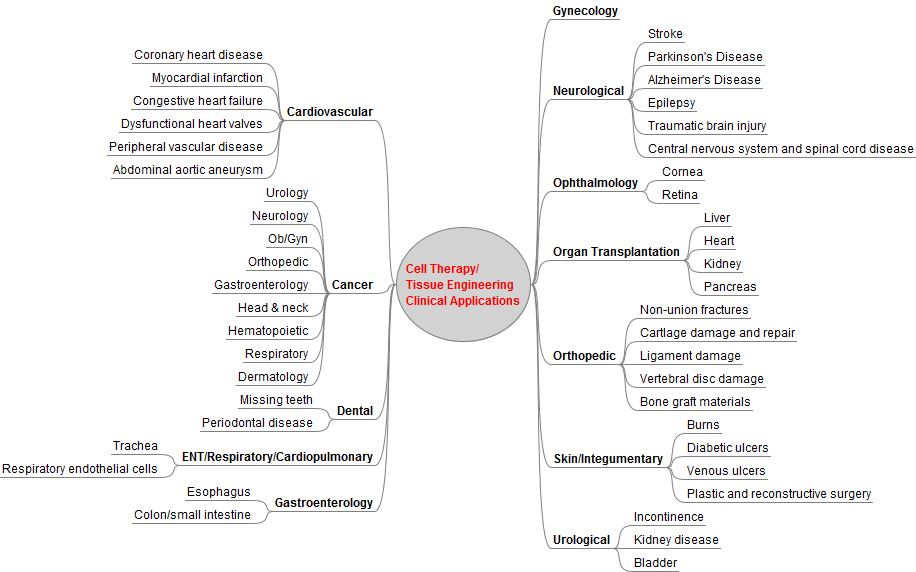The market for tissue engineering and cell therapy products is set to grow from a respectable $8.3 billion in 2010 to nearly $32 billion by 2018. This figure includes bioengineered products that are themselves cells or are actively stimulating cell growth or regeneration, products that often represent a combination of biotechnology, medical device and pharmaceutical technologies. The largest segment in the overall market for regenerative medicine technologies and products comprises orthopedic applications.
The market for tissue engineering and cell therapy products is set to grow from a respectable $8.3 billion in 2010 to nearly $32 billion by 2018. This figure includes bioengineered products that are themselves cells or are actively stimulating cell growth or regeneration, products that often represent a combination of biotechnology, medical device and pharmaceutical technologies. The largest segment in the overall market for regenerative medicine technologies and products comprises orthopedic applications. Other key sectors are cardiac and vascular disease, neurological diseases, diabetes, inflammatory diseases and dental decay and injury.
Factors that are expected to influence this market and its explosive growth include political forces, government funding, clinical trial results, industry investments (or lack thereof), and an increasing awareness among both physicians and the general public of the accessibility of cell therapies for medical applications. Changes in the U.S. government’s federal funding of embryonic stem cell research has given a potentially critical mass of researchers increased access to additional lines of embryonic stem cells. This is expected to result in an increase in the number of research projects being conducted and thus possibly hasten the commercialization of certain products.
Source: Report #S520, “Tissue Engineering, Cell Therapy and Transplantation: Products, Technologies & Market Opportunities, Worldwide, 2009-2018.”
Another factor that has influenced the advancement of regenerative technologies is found in China, where the Chinese government has encouraged and sponsored cutting-edge (and some have complained ethically questionable) research. While China’s Ministry of Health has since (in May 2009) established a policy requiring proof of safety and efficacy studies for all gene and stem cell therapies, the fact remains that this research in China has spurred the advancement of (or at least awareness of) newer applications and capabilities of gene and stem cell therapy in medicine.
Meanwhile, stricter regulations in other areas of Asia (particularly Japan) will serve to temper the overall growth of commercialized tissue and cell therapy–based products in that region. Nonetheless, the growth rate in the Asia/Pacific region is expected to be a very robust 20% annually.
MedMarket Diligence’s Report #S520 remains the most comprehensive and credible study of the current and project market for products and technologies in cell therapy and tissue engineering.
